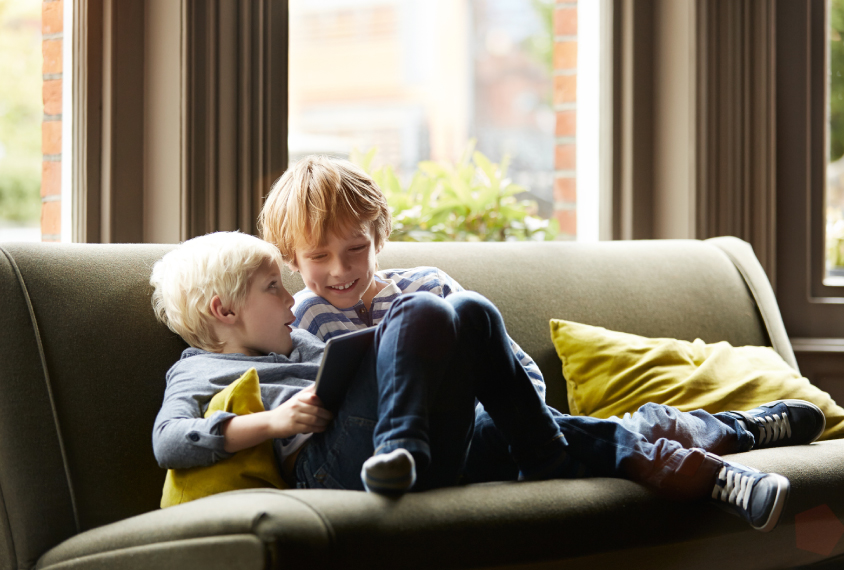
Data do-over backs dominance of genetics in autism risk
A reanalysis of data from more than 2 million children in Sweden suggests inherited genetic factors account for 83 percent of autism risk.
A reanalysis of data from more than 2 million children in Sweden suggests inherited genetic factors account for 83 percent of autism risk1.
A 2014 study using the same dataset pointed to an equal contribution from genetics and the environment, but experts in the field were critical of the findings, citing flaws in the study’s methods.
Then, to their surprise, the researchers came up with a heritability estimate of 85 percent using an overlapping dataset of nearly 800,000 Swedish children2. That result prompted them to revisit their earlier work.
In both studies, non-inherited genetic factors called de novo mutations are included in the 17 percent of autism risk dubbed ‘environmental.’ De novo mutations are thought to be important in autism.
“We have been working on this question using more updated data and, doing so, we then found heritability to be larger than we estimated earlier,” says lead researcher Sven Sandin, assistant professor of psychiatry at the Icahn School of Medicine at Mount Sinai in New York.
The new estimates align with findings from a 2010 study that placed the contribution of inherited genetic factors to autism risk at 80 percent3. That study also included de novo mutations in the ‘environmental’ category.
Sibling similarities:
In their 2014 study, Sandin and his team analyzed data from 2.6 million non-twin sibling pairs, 37,570 pairs of twins, and 877,812 half-sibling pairs, all born in Sweden between 1982 and 2006. Of these individuals, 14,516 have an autism diagnosis. The data came from Swedish national health registries.
The researchers looked for siblings who were ‘concordant’ for autism, meaning they both have the condition. They followed one sibling from each pair from birth until he or she was diagnosed or until the study ended in 2009, whichever came first. If that child was diagnosed, they looked to see whether the sibling had also received a diagnosis.
But this approach missed some children who received a diagnosis only after the sibling the researchers followed was diagnosed.
“Some concordant siblings would have been considered not concordant the first time” the researchers analyzed their data, says Qian (Kenny) Ye, associate professor of epidemiology and population health at Albert Einstein College of Medicine in New York, who was not involved in the study.
In the re-analysis, the researchers looked at data from both siblings until 2009. By that time, the youngest children were 4 — old enough to receive an autism diagnosis. If both members of the pair received an autism diagnosis at any point during the study, the researchers considered them concordant.
Double digits:
Using this approach, the researchers nearly doubled the number of concordant sibling pairs in their study. They also boosted their estimate of autism’s heritability from 50 percent to 83 percent. The results appeared in September in the Journal of the American Medical Association.
“I think it’s great that this group of researchers took the trouble, actually, to publicly acknowledge that their previous publication might have been suboptimal,” says Dorret Boomsma, professor of biological psychology at Vrije Universiteit in Amsterdam, who was not involved in the study.
In their other study, published in September in Biological Psychiatry, the researchers again drew on Swedish health registry data, but focused this time on the period between 1998 and 2007. This sample includes 776,212 children, 11,231 of whom have been diagnosed with autism. They also looked for autism diagnosed among the children’s relatives, including siblings and cousins.
They applied statistical models that account for the family relationships to estimate the heritability of autism. They calculated that genetics contributes 84.8 percent of autism risk.
“I think it has been repeated several times now and we are converging to this number,” Sandin says.
He and his colleagues are also using the Swedish registries to study recurrence of autism within a family — the likelihood that a sibling of a child with autism also has the condition.
References:
Recommended reading

New organoid atlas unveils four neurodevelopmental signatures

Glutamate receptors, mRNA transcripts and SYNGAP1; and more

Among brain changes studied in autism, spotlight shifts to subcortex
Explore more from The Transmitter

Psychedelics research in rodents has a behavior problem
Can neuroscientists decode memories solely from a map of synaptic connections?
